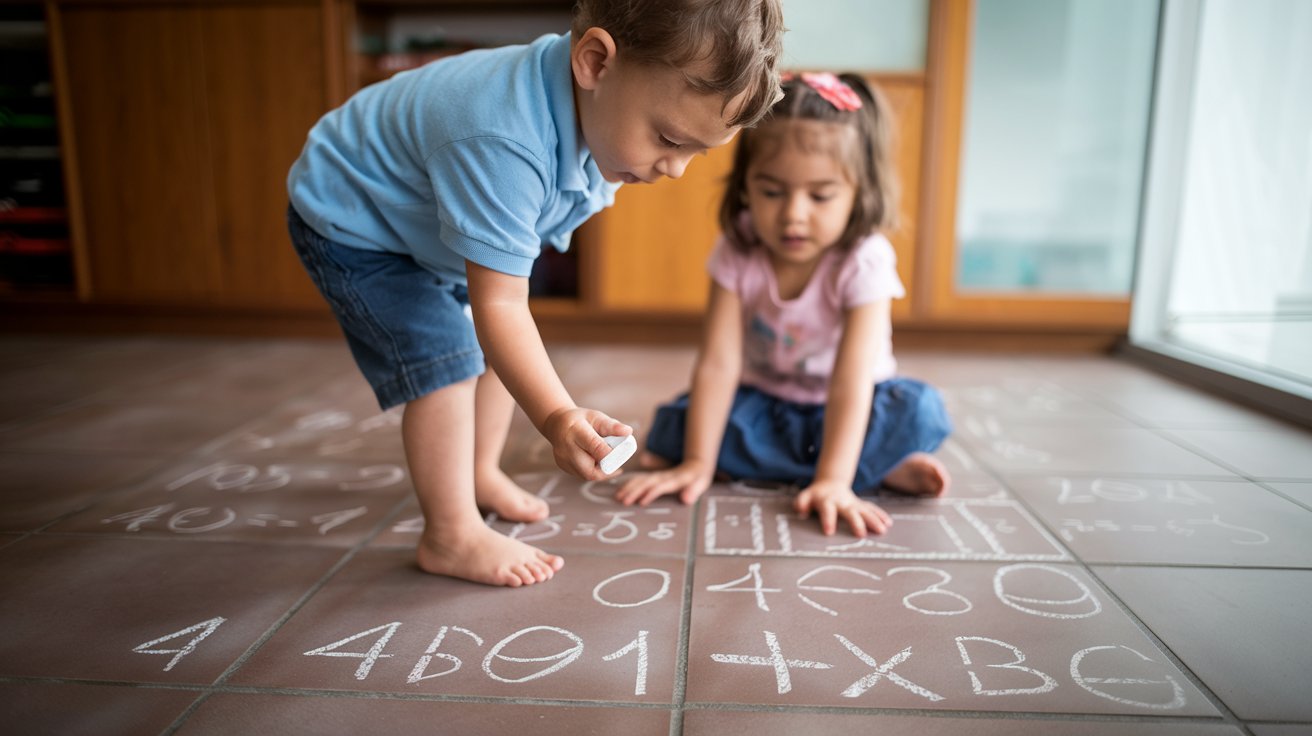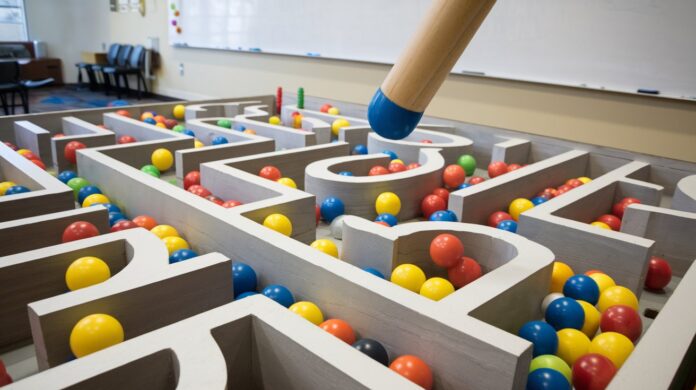In a world where math anxiety affects countless students and adults alike, finding ways to make mathematics enjoyable is more important than ever. Enter math games—the perfect blend of entertainment and education that can transform dreaded number crunching into delightful brain exercise. Whether you’re a parent looking to support your child’s learning journey, a teacher seeking classroom activities, or an adult wanting to sharpen your own skills, math games offer an engaging path to mathematical proficiency. This comprehensive guide explores how incorporating play into math practice can lead to significant skill improvements while creating positive associations with numbers and problem-solving.
Why Math Games Work: The Science Behind Learning Through Play
The Psychology of Gamification
When mathematics transforms from abstract concepts on a page to interactive challenges with clear goals and rewards, something remarkable happens in our brains. The gamification of math activates our reward pathways, releasing dopamine—the “feel-good” neurotransmitter—when we solve problems correctly. This creates a positive feedback loop where the brain begins to associate mathematical thinking with pleasure rather than anxiety.
Research from cognitive science shows that game-based learning can increase motivation and engagement by up to 40% compared to traditional methods. When we’re enjoying ourselves, we naturally become more receptive to new information and more persistent in the face of challenges.
Building Neural Pathways Through Repetition
Math games typically involve repeated practice of specific skills—whether it’s multiplication facts, fraction comparisons, or algebraic thinking. This repetition is crucial for learning, as it strengthens neural pathways through a process neuroscientists call “myelination.”
The key difference between traditional drills and math games is that games disguise this repetition within varied contexts and reward systems. Instead of completing 20 similar worksheet problems, players might solve the same types of calculations while racing against the clock, outsmarting opponents, or advancing through game levels—making the practice feel fresh and motivating each time.
Reducing Math Anxiety Through Play
Math anxiety affects approximately 50% of Americans and has been shown to activate the same brain regions as physical pain. By reframing math as play, games can significantly reduce this anxiety response.
When engaged in a game, our focus shifts from “I need to be good at math” to “I want to win this round” or “I want to beat my previous score.” This subtle but powerful shift helps bypass the negative emotions traditionally associated with math performance, creating a safe space for risk-taking and learning from mistakes.
Types of Math Games for Different Learning Styles
Digital Math Games for Tech-Savvy Learners
The digital age has brought an explosion of math gaming options, from sophisticated educational apps to immersive online platforms. Games like Prodigy Math, DragonBox, and Khan Academy Kids offer adaptive learning experiences that adjust to each player’s skill level, providing appropriate challenges that keep engagement high without causing frustration.
For older students and adults, platforms like Brilliant.org and Mathigon offer more advanced game-based learning with visually stunning interfaces that make abstract concepts tangible. These digital options excel at providing immediate feedback and tracking progress over time—two crucial elements for effective learning.
Tabletop Games for Tactile and Social Learners
Not all effective math games require screens. Traditional board games like Monopoly (money management), Yahtzee (probability and statistics), and Sequence Numbers (pattern recognition) have been building math skills for generations.
More recent additions to the tabletop genre specifically designed for math education include Prime Climb, which makes prime factorization visually intuitive, and Tiny Polka Dot, which introduces young children to number sense through multiple mini-games.
The physical manipulation of game pieces—whether they’re cards, dice, tokens, or tiles—engages kinesthetic learning pathways while the social interaction of tabletop gaming adds communication skills to the educational benefits.
Physical Math Games for Kinesthetic Learners
For those who learn best through movement, math games that get players physically active can be particularly effective. Simple activities like Hopscotch (counting and number recognition), Bean Bag Toss (addition and subtraction), or Human Number Line (integer operations) transform the playground or living room into a math laboratory.
Schools increasingly incorporate “Math and Movement” programs where students skip, hop, or dance along number lines, coordinate planes, or multiplication grids—combining physical activity with mathematical concepts. This approach not only helps kinesthetic learners but also provides healthy breaks from seated learning for all students.
Age-Appropriate Math Games: From Preschool to Adult Learning

Early Childhood (Ages 3-5): Building Number Sense Foundations
At this stage, the focus is on developing basic number sense—understanding what numbers represent and how they relate to quantities in the real world. Games that excel at this include:
- Counting Bears: Simple sorting and counting activities with colorful bear manipulatives help children connect numbers to physical quantities.
- Number Puzzles: Matching pieces with numbers to corresponding quantities builds recognition and one-to-one correspondence.
- Musical Numbers: Like musical chairs but with numbered spots, this game combines movement, music, and number recognition.
These early math games should emphasize joy and exploration rather than correct answers, laying a positive foundation for future math learning.
Elementary School (Ages 6-10): Mastering Operations and Facts
As children progress through elementary school, they need to develop fluency with basic operations while maintaining enthusiasm for mathematics. Effective games include:
- Multiplication War: A card game variation where players multiply the values of their cards, with the highest product winning the round.
- Place Value Pirates: A treasure hunt game where clues involve decomposing numbers into hundreds, tens, and ones.
- Fraction Bingo: Matching visual representations of fractions to their numerical form helps build conceptual understanding.
Games at this level should balance skill-building with engagement, providing enough repetition for mastery without becoming tedious.
Middle and High School (Ages 11-17): Applying Advanced Concepts
Adolescents benefit from games that connect abstract mathematical concepts to real-world applications while respecting their increasing social awareness. Effective options include:
- Stock Market Game: Simulations of investment strategies teach percentages, graphing, and financial literacy.
- Geometric Construction Challenges: Competitive or collaborative challenges using compass and straightedge build geometric reasoning.
- Logic Puzzles and Riddles: Games like Sudoku, KenKen, and logic grid puzzles develop deductive reasoning applicable to algebraic problem-solving.
At this age, the competitive elements of games can be particularly motivating, especially when they connect to students’ emerging identities and interests.
Adult Learners: Maintaining Mental Agility
For adults, math games serve dual purposes: maintaining cognitive function and often addressing gaps in understanding from earlier education. Effective approaches include:
- Strategic Board Games: Games like Chess, Go, and Backgammon build logical thinking and planning several moves ahead.
- Brain Training Apps: Programs like Lumosity and Peak offer math-focused challenges designed to maintain neural plasticity.
- Puzzle Books: Sudoku, KenKen, and logic problem collections provide portable math practice for busy adults.
Adult learners particularly benefit from games that connect to practical applications like financial planning, home improvement calculations, or work-related number challenges.
Implementing Math Games in Different Settings
In the Classroom: Balancing Fun and Learning Objectives
Teachers can strategically incorporate math games as:
- Warm-up activities: Short, energizing games to begin class and activate mathematical thinking
- Station rotations: Having multiple math games as learning centers allows differentiated practice
- Assessment alternatives: Games can reveal student understanding in less stressful ways than formal tests
- Reward activities: Using math games as rewards maintains the focus on mathematics even during “free” time
Effective classroom implementation requires clear connections to learning objectives, manageable noise levels, and systems for tracking progress through game-based activities.
At Home: Creating a Family Math Culture
Parents can foster mathematical thinking by:
- Scheduling regular family game nights featuring math-rich games
- Discussing mathematical strategies during and after gameplay
- Modeling positive attitudes toward mathematical challenges
- Connecting games to everyday math used in cooking, shopping, and other activities
The home environment offers unique opportunities for intergenerational learning, with parents and children taking turns teaching each other new games and strategies.
Independent Practice: Self-Driven Improvement
For self-directed learners, creating a progressive game plan helps maintain motivation:
- Start with strengths: Begin with games involving familiar math concepts to build confidence
- Identify growth areas: Select games targeting specific skills you want to develop
- Track progress: Keep a log of scores, completion times, or levels achieved to visualize improvement
- Join communities: Online and in-person groups focused on mathematical games provide accountability and fresh challenges
Self-directed practice benefits from establishing routines—perhaps 15 minutes of math games with morning coffee or as an evening wind-down activity.
Creating Your Own Math Games: Custom Learning Experiences
Adapting Familiar Games with Mathematical Twists
Many popular games can be modified to incorporate mathematical thinking:
- Mathematical Scrabble: Players earn points based on mathematical properties of the numbers they create
- Equation Jenga: Write different numbers and operations on Jenga blocks, requiring players to create valid equations with drawn blocks
- Mathematical Scavenger Hunts: Hide clues that require solving math problems to find the next location
These adaptations leverage the familiar structure of beloved games while infusing them with targeted mathematical content.
Designing Games Based on Specific Learning Needs
When commercial games don’t address particular skills, creating custom games can fill the gap:
- Identify the specific concept that needs reinforcement
- Determine appropriate challenge levels based on current understanding
- Incorporate elements of games the learner already enjoys
- Create simple, clear rules with a focus on the target skill
- Design a visually appealing game board or interface
- Test and refine based on player engagement and learning outcomes
Homemade games often become favorites precisely because they’re tailored to individual interests and learning needs.
Measuring Progress: Beyond Test Scores
Observable Indicators of Mathematical Growth
Effective math gaming leads to improvements that may not immediately appear on standardized assessments:
- Increased mathematical conversation: Using proper terminology and discussing strategies
- Mathematical persistence: Willingness to tackle challenging problems without giving up
- Transfer of skills: Applying concepts from games to real-world situations
- Spontaneous mathematical thinking: Noticing patterns and relationships outside of formal learning contexts
- Positive emotional associations: Expressing enjoyment and confidence when approaching mathematical tasks
These qualitative changes often precede and predict improved performance on more formal assessments.
Tracking Game Performance as a Metric
Many math games provide their own built-in assessment mechanisms:
- Increasing difficulty levels mastered over time
- Improved speed at solving similar problems
- Strategy sophistication evolving from basic to advanced approaches
- Teaching others the mathematical concepts within the games
Recording these game-based achievements provides motivation and documents progress in more engaging ways than traditional tests.
Conclusion: Building a Lifelong Mathematical Mindset
The ultimate goal of incorporating math games into learning extends far beyond improved test scores or classroom performance. By connecting mathematics with positive emotions, social interactions, and the intrinsic rewards of play, we build a foundation for lifelong mathematical thinking.
When mathematics transforms from a dreaded subject to an engaging puzzle to be solved, we open doors to educational and career pathways that might otherwise remain closed. We develop mental flexibility, logical reasoning, and problem-solving abilities that transfer across disciplines and life situations.
Whether you’re rolling dice, sliding tiles, dealing cards, or clicking through digital challenges, each playful mathematical interaction helps rewire the brain’s approach to numbers and abstract thinking. In a world increasingly driven by data and algorithmic thinking, this playful relationship with mathematics may be one of the most valuable gifts we can give ourselves and the next generation of learners.
So deal those cards, roll those dice, and let the mathematical games begin—your brain will thank you for the workout, and you might just find yourself having too much fun to notice you’re getting smarter with every play.

Zareb Saleh is a journalist at Gulf Today and a ghostwriter for Gameoholic, specializing in gaming, technology, and digital culture. With a keen eye for industry trends, he delivers insightful stories that engage and inform readers.




